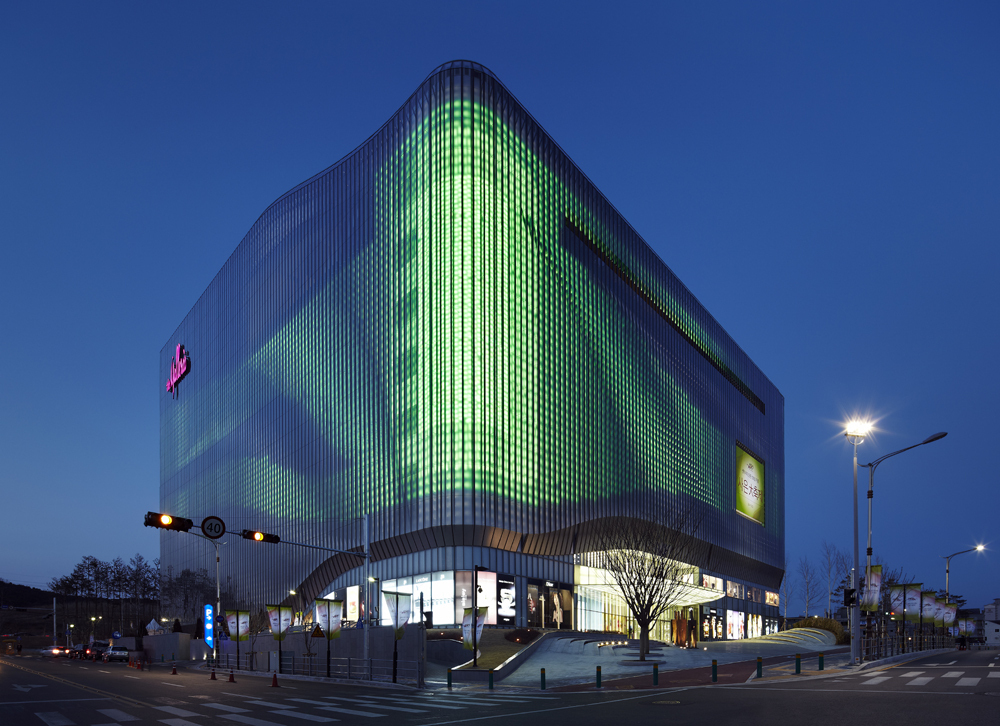Submitted by WA Contents
Beyond ‘Things That Flicker’:The Next Step for Media Architecture
United Kingdom Architecture News - Oct 15, 2014 - 09:45 2804 views
Matthew Claudel, a researcher at the MIT Senseable Cities Lab, investigates what the future holds for media architecture and implores it to explore ideas beyond ‘TV screens for living in’.

Galleria Centercity / UNStudio. Image copyright UNStudio. Photographed by Kim Jong-Kwan
From 19 to 22 November in Aarhus, Denmark, the Media Architecture Biennale 2014 will feature the world premier of Mapping the Senseable City, an exhibition of the now 10-year-old MIT Senseable Cities Lab’s collected works. The following essay was written by Matthew Claudel, a researcher at the Senseable Cities Lab, in response to this collection, investigating what the future holds for media architecture, and imploring it to explore ideas beyond ‘TV screens for living in’.
The Actuated Cathedral
Media architecture is emphatically ambiguous. The phrase has been pasted wholesale onto a dizzying array of projects and products. But beyond imprecision, media architecture is vexed by an inherent tension: media are networked, immediate, dynamic communication systems that reach people broadly, while architecture is sited, singular, and persistent in time. Reconciling the two evokes clumsy associations with Times Square, screens, integrated LEDs, paparazzi, or more generally things that flicker.
The contemporary definition is flat, literally and figuratively, suggesting a “hybrid architecture… Light Emitting Diode (LED) displays integrated with the fabric of built structures allow prominent imagery to be integrated with the façade… [with] significant consequences for the townscape and urban environment; cinematic topias”.[1] Cinematic topias? If media is the next evolution of architecture, will the 21st century city be composed of TV screens for living in?.....Continue Reading
> via Australian Design Review
